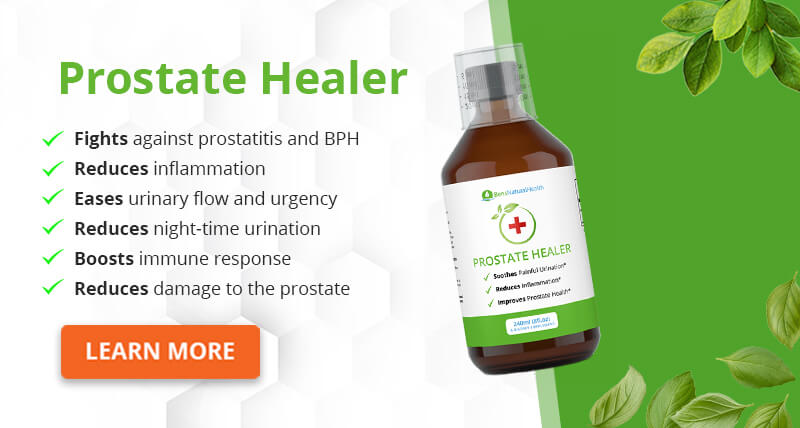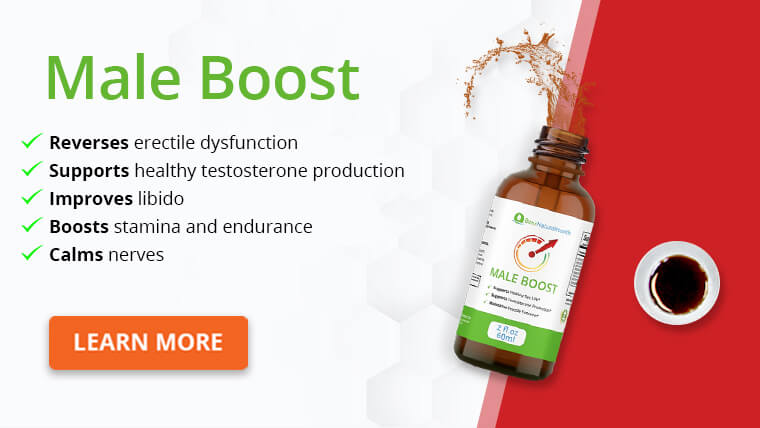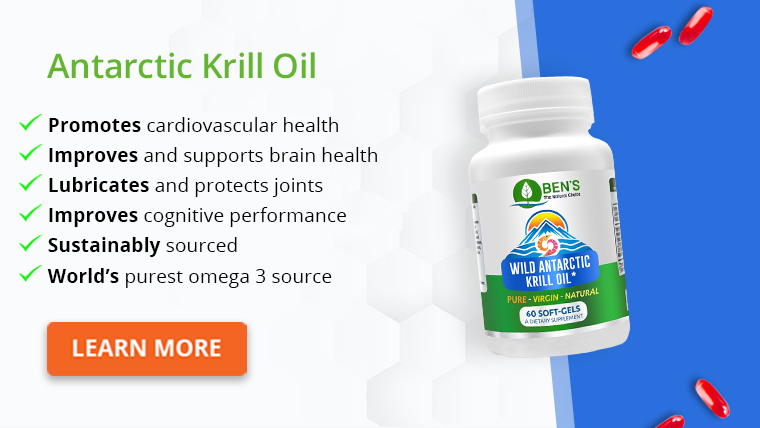Are you constantly getting close to climax, only to feel sharp pain soon or right after reaching it?
Then this could be a clear sign of dysorgasmia.
Any sexual dysfunction can take a toll on your sex life.
But, when dealing with dysorgasmia, it can be difficult to achieve fulfilling and pleasurable intercourse.
Those who struggle with it tend to feel hopeless or discouraged from having sex.
But, it’s important to recognize the causes to find the right treatment.
There could be an underlying condition or a pelvic floor problem that’s causing the issue.
Here is a detailed overview of how dysorgasmia can affect the body.
What is dysorgasmia?
Dysorgasmia (painful orgasm) is a painful condition that can significantly affect the quality of life and sexual health. It is an orgasmic disorder that can affect both women and men.
Pain after orgasm in female patients can also happen during the climax, typically in the belly (abdomen). (1)
Dysorgasmia is a different kind of pain than dyspareunia, which is recognized by aches around or in the genitals before, after, or during sex, regardless if the patient achieves an orgasm.
Are painful orgasms normal?
It is not healthy or normal to have orgasmic dysfunction. Even slight pain after ejaculation can leave an impact.
Regardless of the amount of post-ejaculatory pain you are experiencing, it is best to get it checked out.
That applies to women as well. After all, masturbation and intercourse should offer pleasurable genital sensitivity.
When that pleasure turns to pain, it is normal for some couples to feel discouraged from having sex.
Some people with dysorgasmia also experience back pain after masturbation. This pain in the lower back is often caused by bad posture when masturbating.

How common is dysorgasmia?
Dysorgasmia can happen to anyone.
Orgasm disorders in women, defined as the recurrent or consistent delay in or absence of orgasm, impact a quarter of the female population.
The incidence of orgasm-related pain in men was reported from 1.9% to 25%, particularly in those who had a radical prostatectomy. (3) (4)
Any susceptibilities like anxiety or depression and neurological or gynecological complications can increase the risk of dysorgasmia. Once you recognize the symptoms and know what the cramps during arousal feel like, you can start treating the problem.
Signs and symptoms
Because the pelvic muscles contract during climax, the pain could simply result from normal muscle spasms. Hormonal fluctuations could also play a role. Dysorgasmia is more uncomfortable and painful.
The symptoms, onset, and duration can vary from patient to patient. In women’s lower abdomen pain, dysorgasmia could feel like a muscle spasm similar to cramps during a menstrual cycle.
Here are some of the signs that could indicate dysorgasmia:
- Varying sensations from dull aches to unbearable pain
- Agonizing sensations during the climax
- Pain at the level of the penis
- Pain in the lower abdomen, rectum, or testes
- Too weak vaginal muscles
The anticipation of discomfort and pain can stop people from wanting to have sex. This can leave a drastic impact on any intimate relationship.
What does dysorgasmia feel like?
Dysorgasmia can feel like a cramping sensation accompanied by shooting pain in the stomach. Some women also experience a one-sided pain in the lower abdomen during ovulation. With ovaries cramping, it’s not uncommon to experience back pain after intercourse.
It’s important to communicate with your partner, modify the sex positions, and go slow to avoid exacerbating the pain.
On that note, the location of the pain with dysorgasmia could be associated with the type of orgasm you have. That includes anal, penile, or vaginal orgasm.
The sensation will vary in strength, often based on the pelvic floor issues you are feeling. For example, some people experience bladder pains after intercourse. This could be triggered by a side effect, flare-up of painful bladder syndrome, or stress urinary incontinence.
Others have mild pain, similar to ovary cramps. But, when the discomfort after ejaculation and pain during ejaculation becomes more and more persistent, that’s when treatment may be necessary.
How long does dysorgasmia pain last?
The dysorgasmia pain in the abdomen, pelvis, or buttocks can last anywhere from a couple of seconds, minutes to a few hours. But, orgasm-associated pain in men, like stomach pain after ejaculation, can last for a few seconds or persist for up to 2 days. The sensations will vary from person to person.
Causes in men
As with any sexual condition and disorder, dysorgasmia can be triggered by a mix of psychological, emotional, or physical factors.
In men, the causes of dysorgasmia might include:
Prostatitis
This orgasmic disorder is associated with prostatitis and chronic pelvic pain syndrome. Infection or inflammation of the prostate gland can be an impactful urologic problem in men.
It can lead to frequent and painful urination, and it’s easy to confuse with urinary tract infection.

Pelvic surgeries
Dysorgasmia is a classic consequence of pelvic radiation and radical prostatectomy (RP). Radical prostatectomy is a surgery that removes the prostate gland and the lymph nodes around it to treat localized prostate carcinoma in men.
Stones in the ejaculatory duct
Stones can cause painful ejaculation. They can block ejaculation and make it difficult to conceive.
A blockage of one or both ejaculatory ducts can lead to low sperm count, post-ejaculatory pain, and low sperm production.
So, it’s not uncommon for those affected to experience pain. They may experience cramps after ejaculating, aches during sex, blood in the semen, decreased semen volume, and/or pain between the anus and scrotum.
Antidepressants
Sexual dysfunction is a known side effect of antidepressants. Painful ejaculation rarely happens. But can occur in patients using tricyclic antidepressants and cyclobenzaprine.
Luckily, these symptoms are reversible and typically subside after the patient discontinues the medication. (5)

Trichomoniasis
This is a typical sexually transmitted infection that tends to affect the urethra. But, it can also affect the prostate gland and head of the penis. In men, this infection can lead to pain during ejaculation.
Psychological complications
Anything from severe stress, depression, and anxiety can lead to painful orgasms. If the pain is emotionally-based, it is best to see a therapist.
Causes in women
Female dysorgasmia pain often manifests as a cramping sensation in the stomach, bottom, or pelvic area. The most reported causes for dysorgasmia in women include:
Endometriosis
Tissue quite like that of the lining of the womb grows in different areas. Mainly the fallopian tubes and ovaries.
This chronic disease affects around 10% of women around the world, statistics show.
But how are endometriosis and orgasms connected? According to experts, patients with mild and minimal endometriosis often have orgasm dysfunction. While patients with severe and moderate endometriosis tend to have pain and desire dysfunction. (6)
Bladder or uterine disorders
Uterus disorders can cause uterine fibroids, which can cause cramps after orgasm. Cramps can also accompany any bladder disorder after masturbation or sex.
Many women report developing an orgasmic disorder, sexual pain disorder, and arousal disorder due to bladder pain syndrome. If you have a urinary tract infection, the cramps and pelvic pain after masturbation can feel worse. (7)

Pelvic inflammatory disease (PID)
Most PID cases result from a bacterial infection. They can spread from the cervix or vagina to the reproductive organs.
When there is scarring in the ovaries, fallopian tubes, and uterus, the ovaries can hurt during a period, ovulation, and intercourse.
Pelvic floor overactivity
Some women experience nerve pain during orgasms. Pelvic floor overactivity can cause nerve damage in the anus and vagina. When there is an impingement or entrapment of the pudendal nerve, it can cause pain during anal orgasm.
Ovarian cysts
Post-climax cramps that develop only on one side could be an indicator of ovarian cysts. These are small sacs filled with fluid. They tend to go away on their own.
But consult your gynecologist if the pain lasts for a long time and you regularly get ovary cramps after your period.
In women with polycystic ovarian syndrome, the condition can’t be cured. But, patients can manage the symptoms.
Antidepressants
These medications can cause problems with sexual functions, such as with sexual arousal, orgasm, and desire in women.
Rates of sexual dysfunction with antidepressant therapy are very high. Drugs with the highest serotonin effects often have the biggest rates of sexual dysfunction. (8)
Emotional problems
Mental health plays a key role in a person’s orgasmic function. Anxiety and depression disorders are associated with reduced sexual arousal and desire. They can have a drastic effect on sexual function.

When to see a doctor
If the cramps cause prolonged pain and discomfort, it’s best to talk to a specialist. Sex is supposed to make you feel good, not squint in pain.
Even though dysorgasmia might feel like mild period cramps in some patients, muscle contraction during orgasm can vary from person to person.
Some people have them during or after the climax. If you are struggling with pain after or during sex, bowel movements, pain during urination, and so on, see a pelvic floor therapist.
But, if the sexual dysfunction drastically impacted your relationship, you might want to talk to a sex therapist.
Diagnosis
When a patient contacts a specialist with symptoms of dysorgasmia, sexual health professionals should thoroughly evaluate the patient’s surgical, medical, and sexual history.
They first do a physical exam to rule out any physical causes that might have led to the problem. They will then examine the genitals and look for anatomical abnormalities. The goal is to examine the entire pelvic floor health and offer reliable treatment.

Treatment
Treatment for cramping pain during arousal or after orgasm depends on what’s causing the problem. The primary care provider can suggest treating the pain by managing the disease or infection that causes the problem.
Experts usually recommend one of these options:
- Pain medication
- Anticonvulsant drugs (for nerve-related complications)
- Muscle relaxants
Treating the underlying medical condition should resolve the symptoms. If the abdominal pain after orgasm has an emotional component, then couples/individual counseling can help.
It’s important to work through any complications or mental health issues in a relationship to find the middle ground.
In case of pelvic pain after intercourse or any pelvic floor dysfunction, then pelvic floor therapy remains a go-to choice. Therapists use manual therapy to treat external and internal soft tissue. They can also address the pelvic floor tension in the fascia and muscles.
If you plan to use over-the-counter painkillers, talk to a doctor first.
4 home remedies for relief
Not all conditions respond well to home remedies. For example, ejaculatory duct obstruction and severe abdominal cramps after masturbation might not respond to herbal medicine. But, there are a few options that can provide some relief.
Hot water bottle
Heat therapy can help the muscles relax. This is a popular option for curbing abdominal cramping. You can also do this with a heating pad, hot bath, and heat patch. (9)
Turmeric
Curcumin in turmeric can offer potent anti-inflammatory properties. This makes it the go-to herb for inflammation and pain. (10)
Pumpkin seed oil
Studies indicate that pumpkin seed oil might relieve BPH symptoms without causing side effects. It can also be a promising agent in combined treatment with antibiotics, parrticularly in patients with chronic pelvic pain syndrome and chronic prostatitis. (11) (12)
Kegel exercises
Kegels can improve sexual health for both women and men. In women, Kegels can relax the vaginal muscles and let them expand, thus curbing some pain. For men, they can increase circulation and restore bladder control after prostate surgery. Doctors often suggest Kegel exercises for dysfunction of the pelvic floor muscles.
Conclusion
Dysorgasmia can be harder to treat than other health problems or sexual symptoms. It is a painful orgasm that can occur in patients without any prior pain during sex.
In some cases, the condition can feel like cramping sensations in the abdomen, buttocks, or pelvis. The sensations can range from mild to severe.
It’s important to figure out what’s causing the problem so that you can find the right treatment method.
Contact a specialist if the duration of dysorgasmia pain is affecting your sex life. A team of sexual health professionals can suggest the best form of treatment.
Explore More







